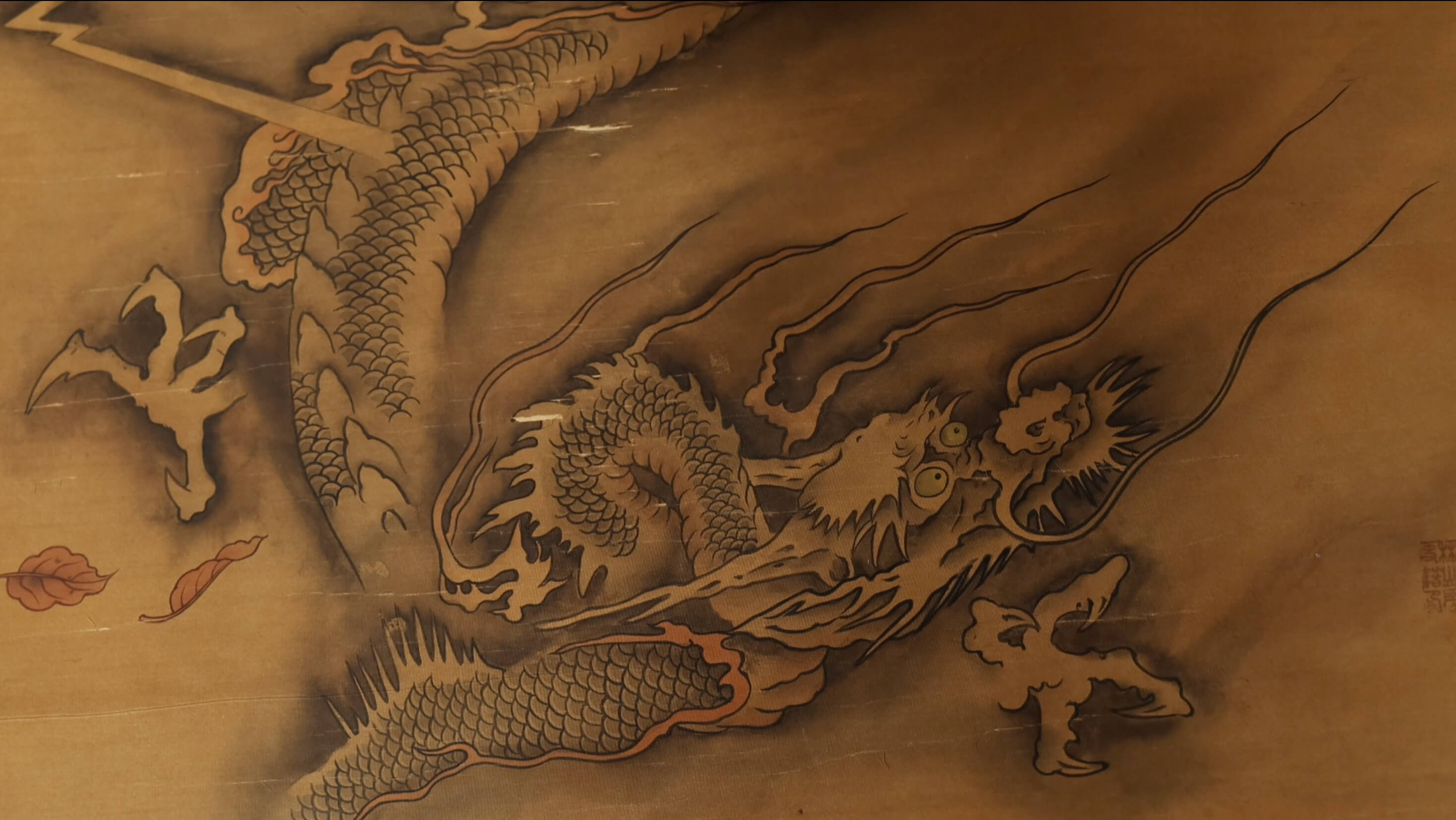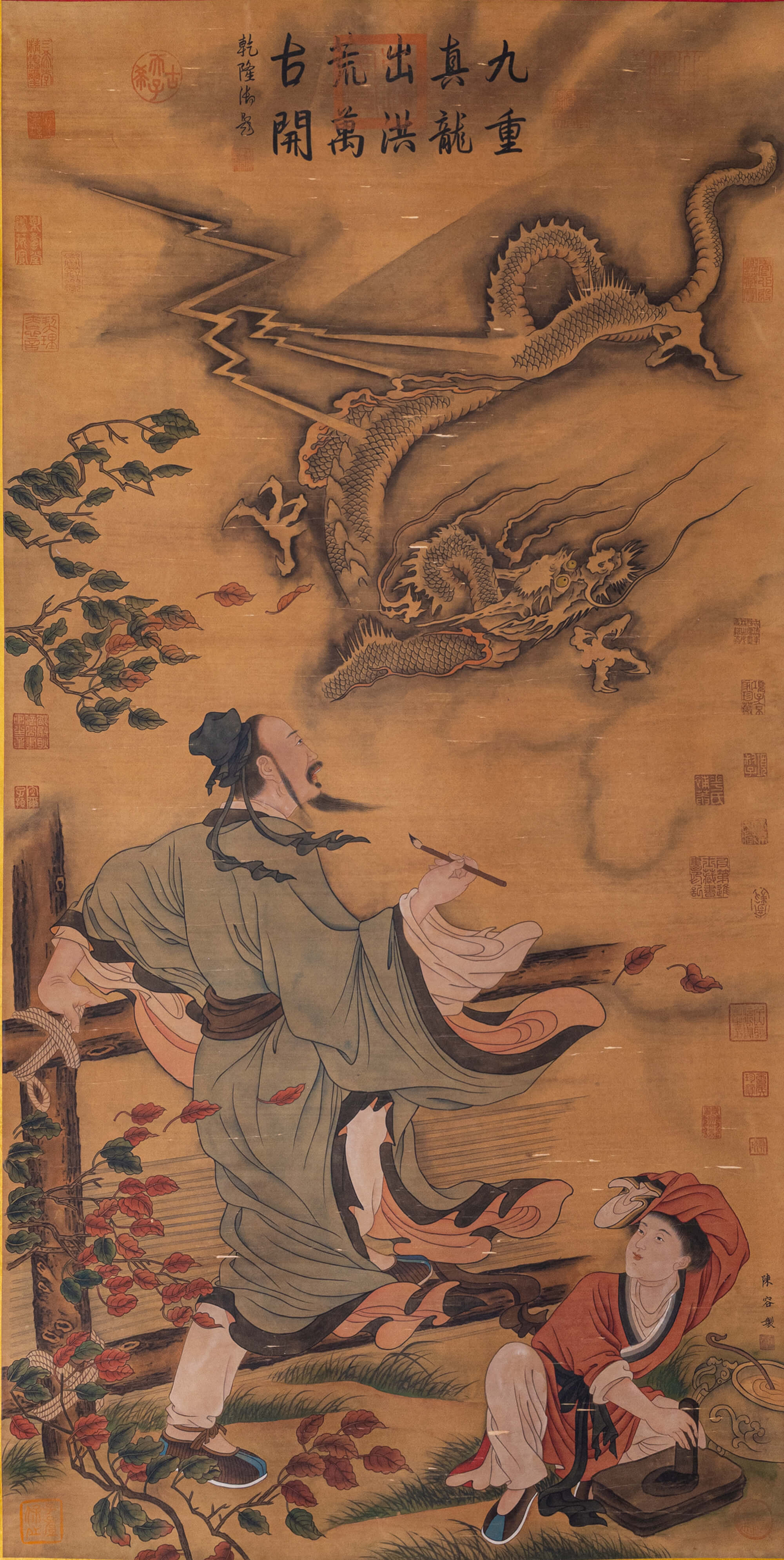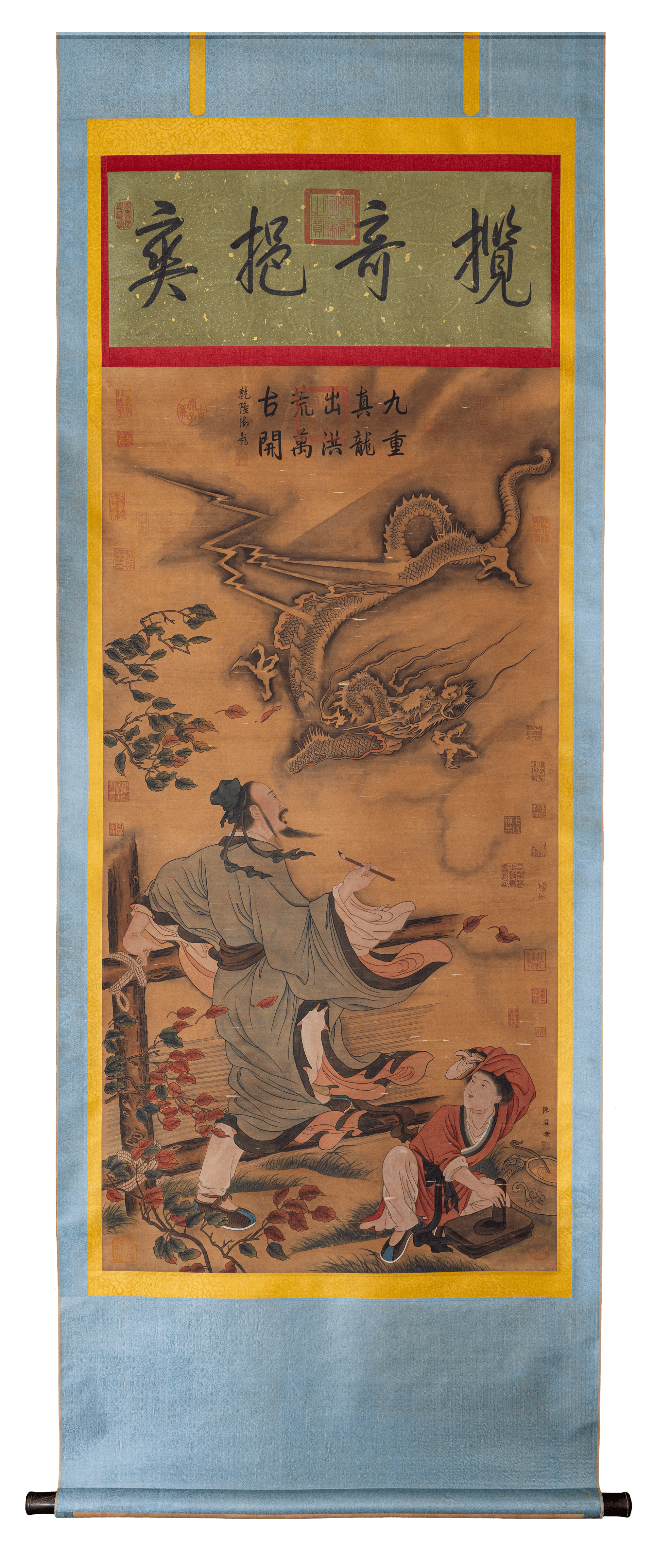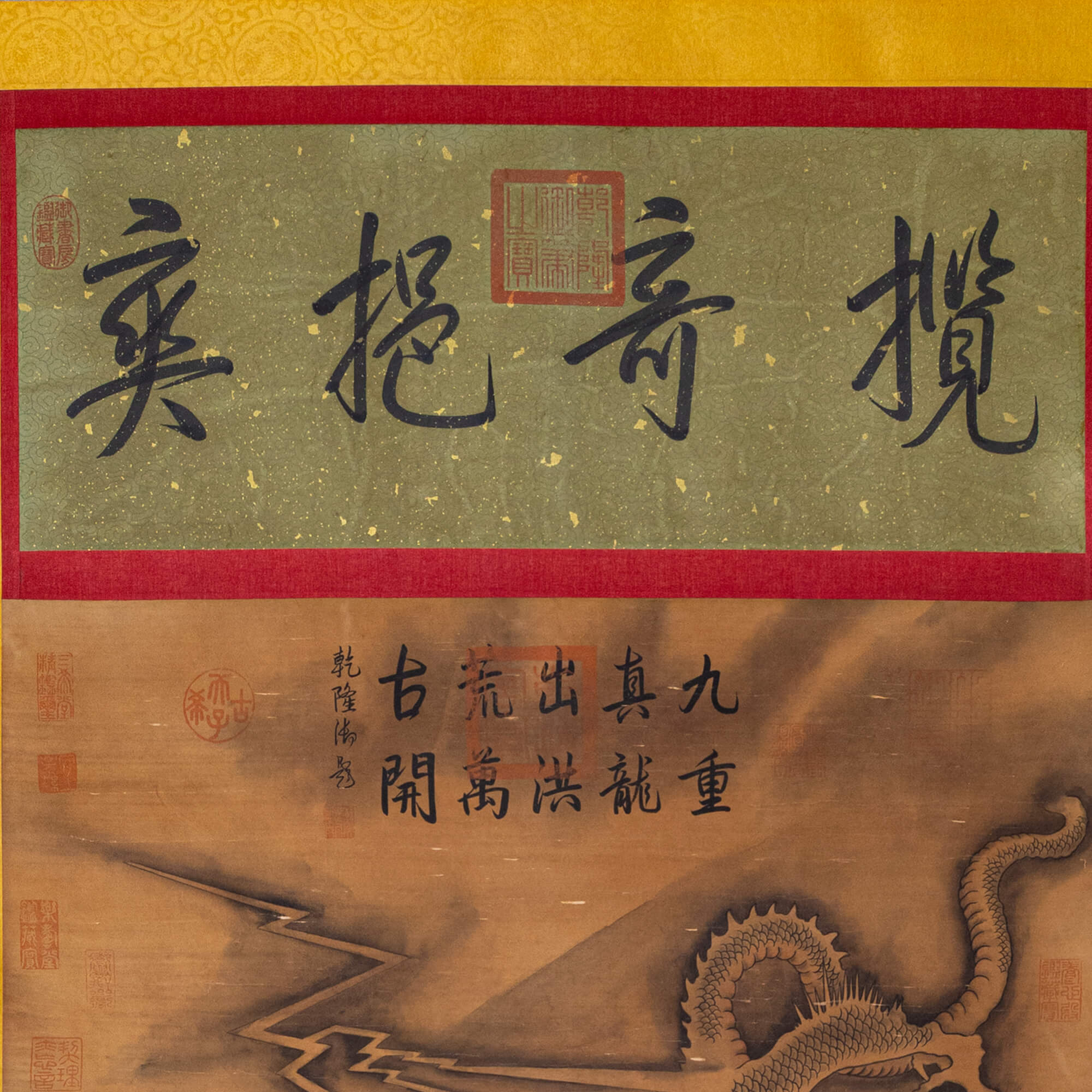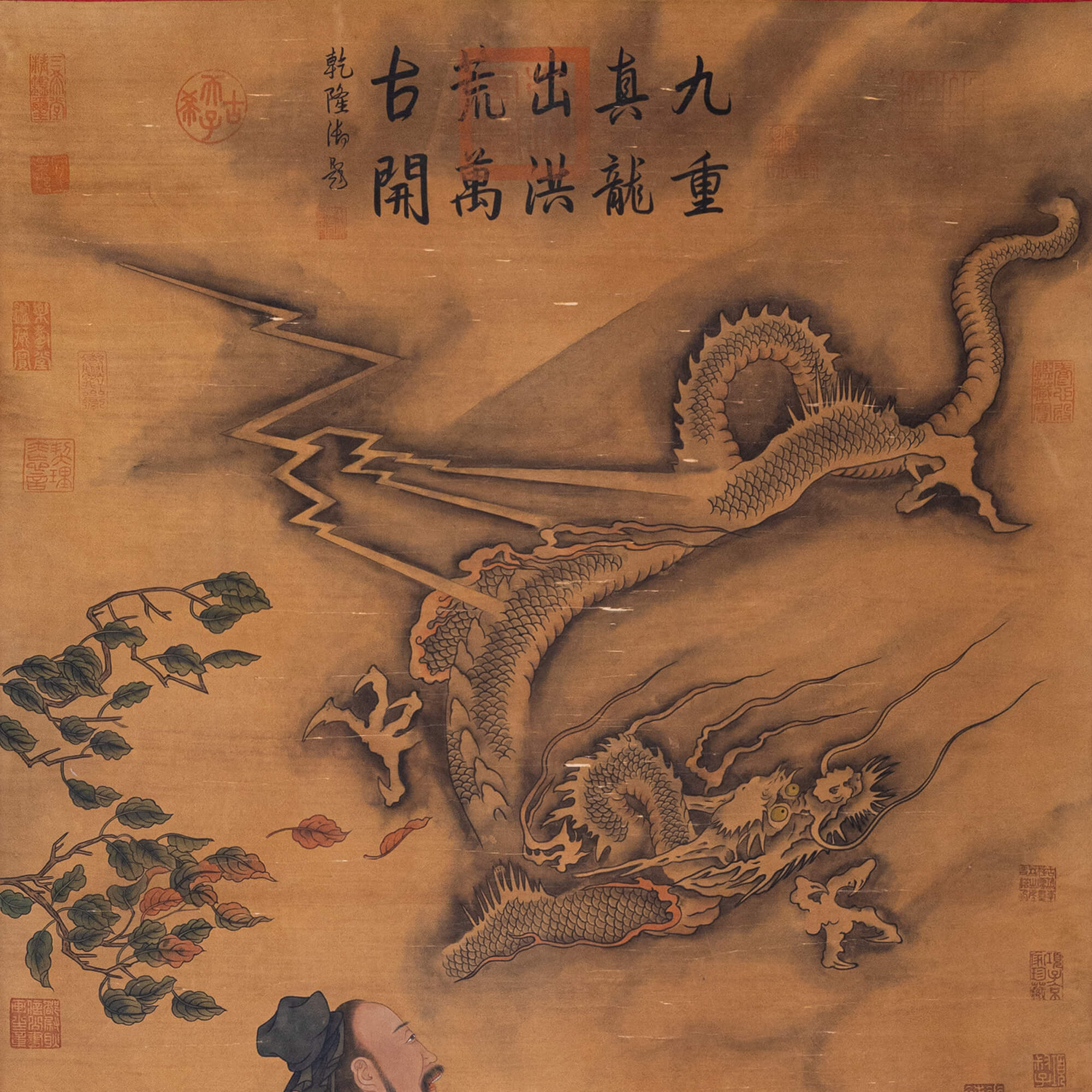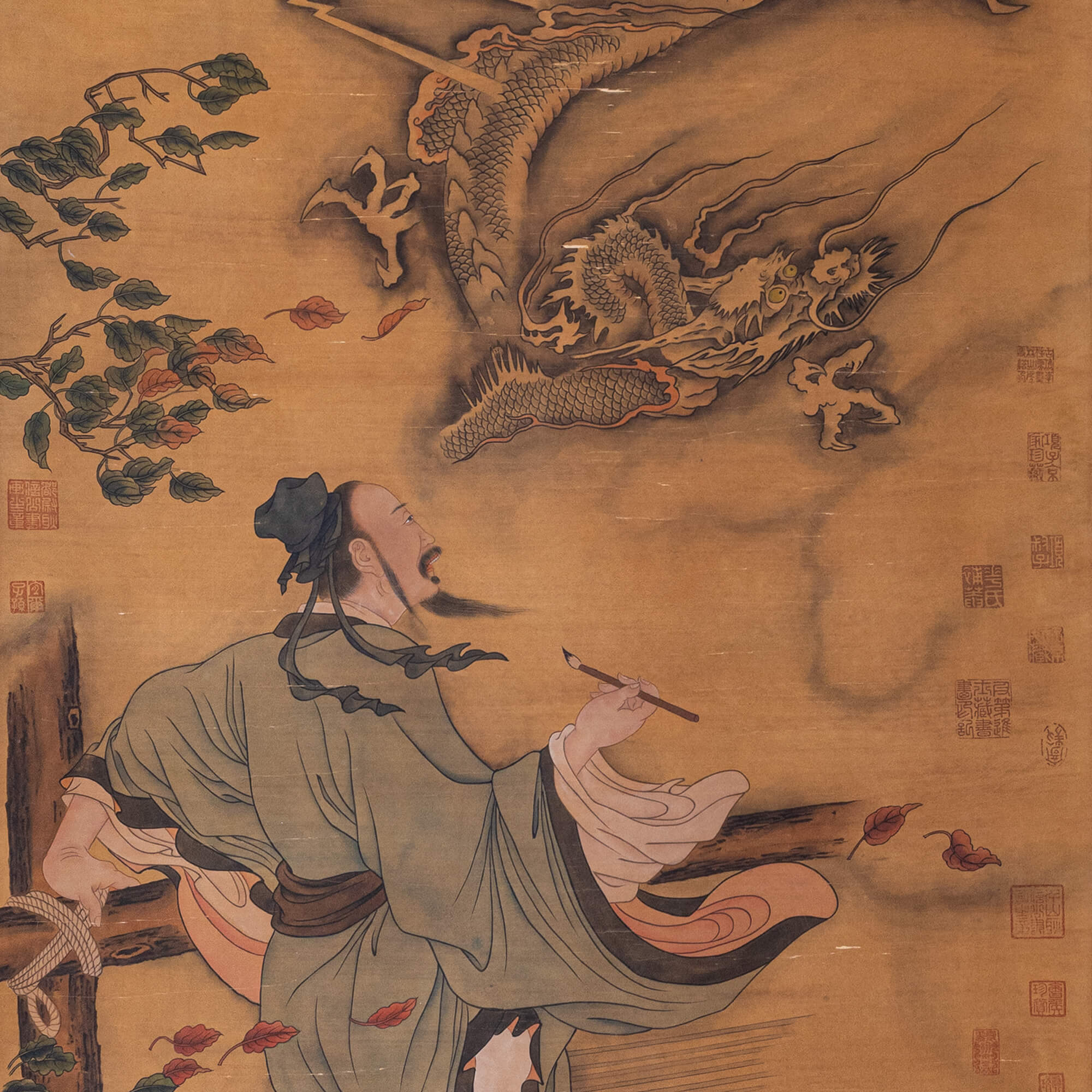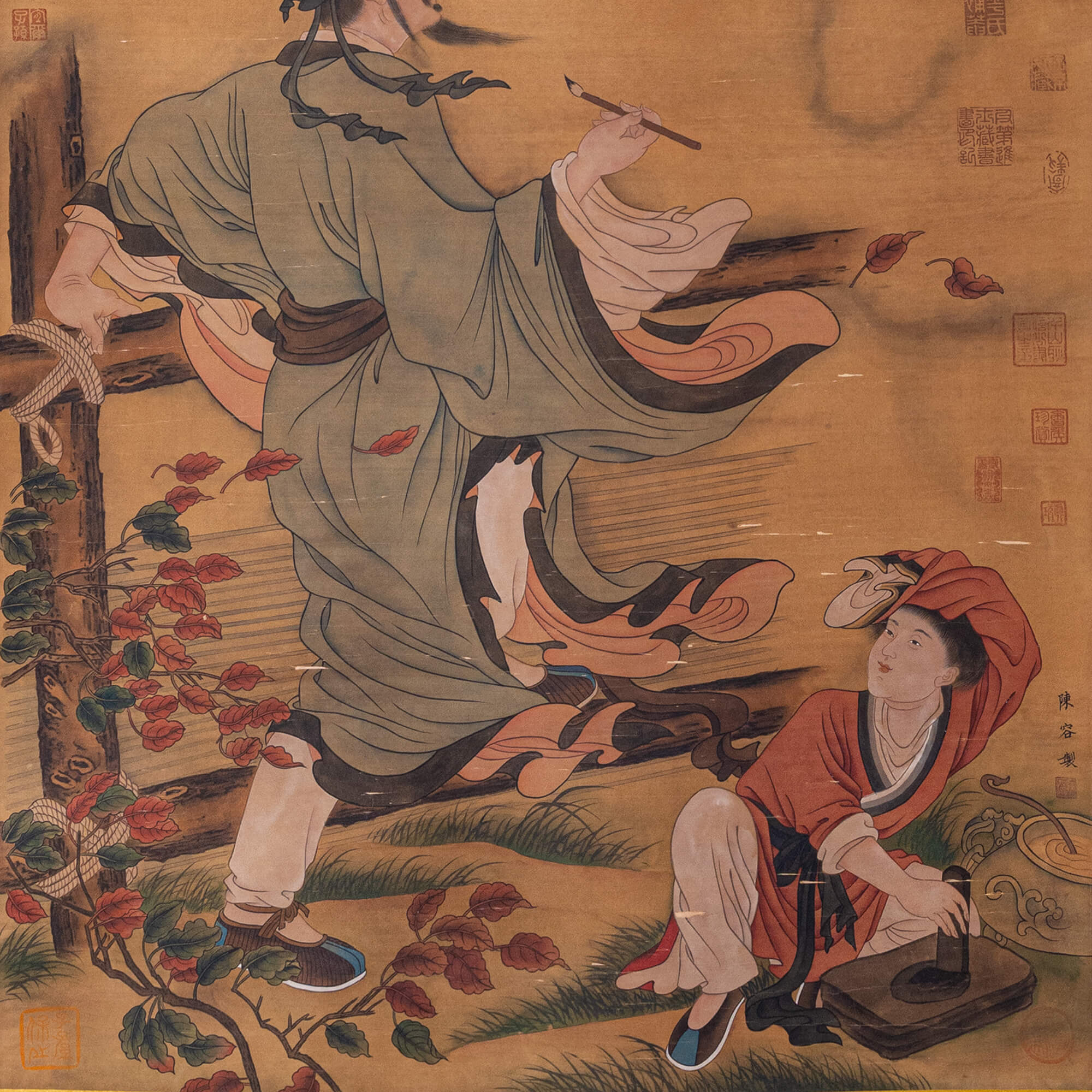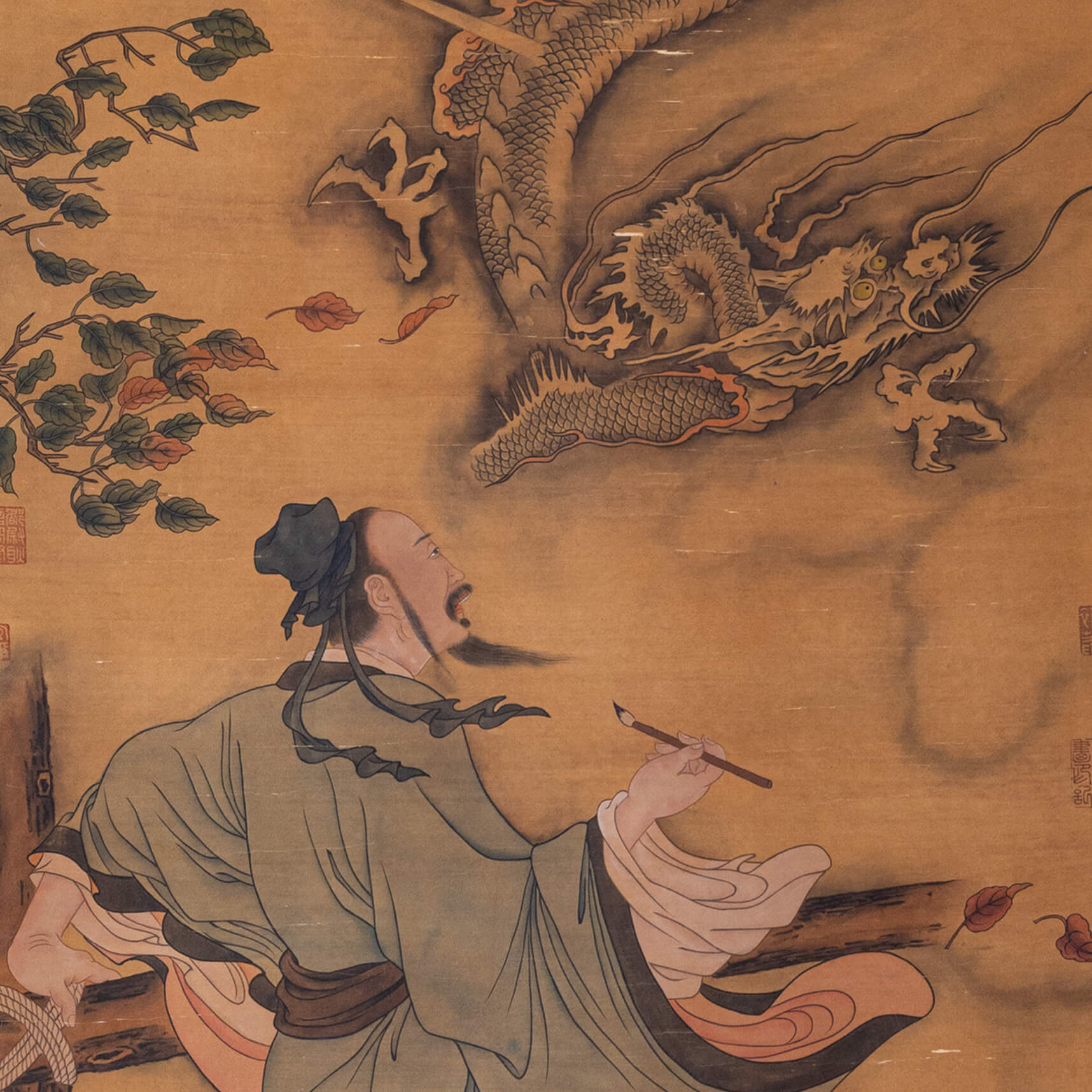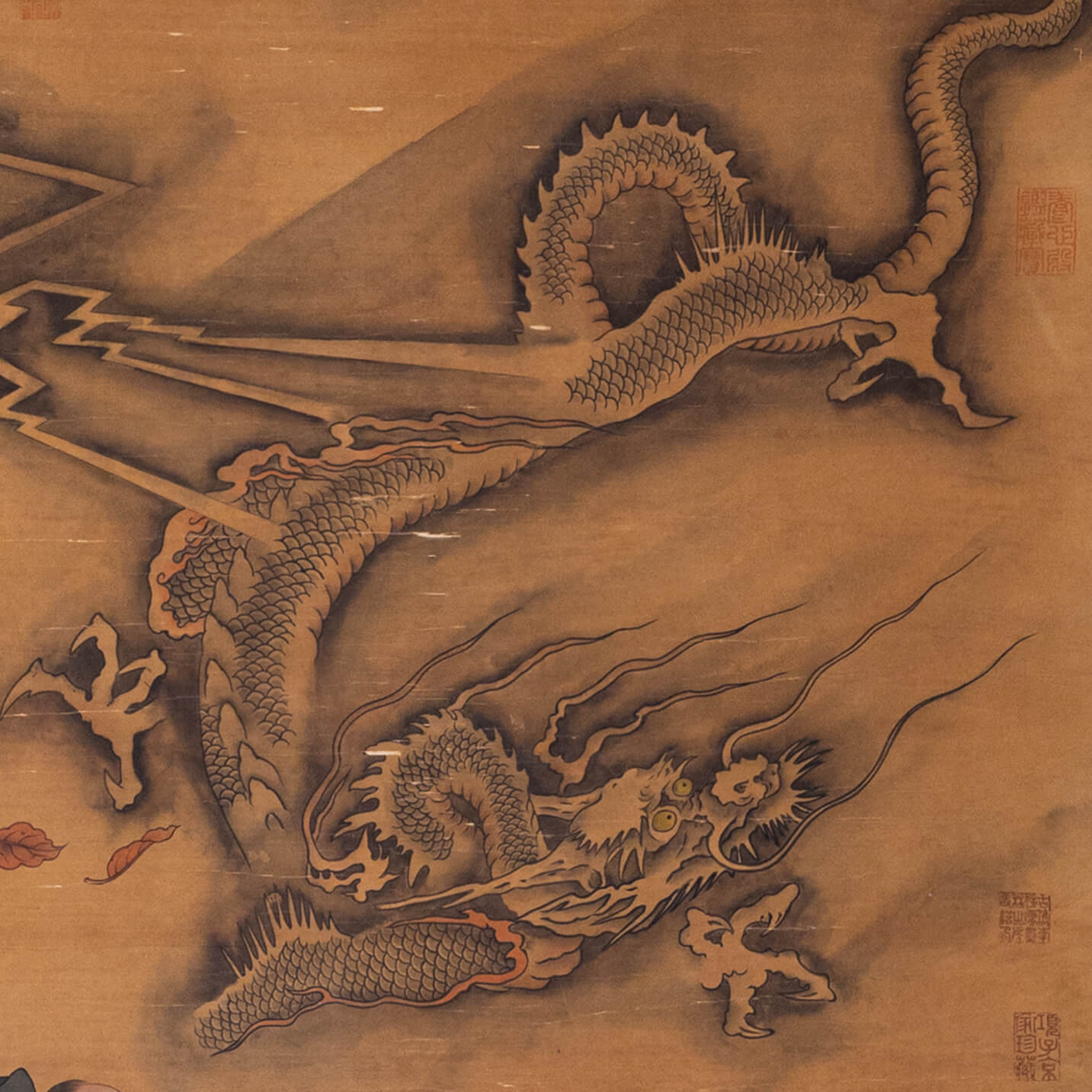Dragon and Figures by Chen Rong — Hanging Scroll Masterpiece

Log in to view your Launchpad status.
Start time
2025-08-19
04:00
End time
2025-08-26
04:00
Distribute tokens
2025-08-28
04:00
Estimated time of trading
2025-08-29
04:00
Sale rules
- Token Name: RONG
- Issuer: Japanese Collector Family
- Total Supply: 100,000,000 (92% allocated for public sale on Launchpad)
- Issue Price: 0.05 USDT / RONG
- Underwriter: NCollector Platform
- Issuance Fee: 8% (held by NCollector platform)
📋 Allocation Rules
Once the Launchpad starts, you can check your remaining allocation in real time and participate in the subscription. During the subscription period, 3 additional flash sale rounds will be available—first come, first served, until sold out.
All users can get allocation units through the following 5 methods at the same time:
1️⃣ Flash Sale Allocation
- Join the platform’s designated flash sale. You can participate in each round without affecting your existing allocation, up to 200 RONG per round.
2️⃣ Staking Allocation
- Stake any of the following assets to receive 300 RONG allocation units, staking period: 45 days:
- 250 YUXI
- or 1,200 MICHO
- or 15,000 POMO
- or 2,500 CHUN
- Minimum staking threshold: 250 YUXI / 1,200 MICHO / 15,000 POMO / 2,500 CHUN (single asset staking).
3️⃣ Trading Allocation
- During Launchpad, for every 10,000 USDT cumulative trading volume, users receive 100 RONG allocation units.
4️⃣ Points Conversion
- Every 10 valid points will be automatically converted into 1 RONG allocation unit.
- Valid points: points earned after June 30, 2025, 04:00 (after Phase IV CHUN subscription ends).
5️⃣ Partner Exclusive Allocation
- Become an official NCollector partner to receive exclusive allocation units.
🏛️ Token Holder Rights
Ownership Rights: The physical asset belongs collectively to all RONG token holders. Each RONG token represents one hundred-millionth (1/100,000,000) ownership of the underlying physical asset.
Proposal Rights: Holders of more than 3% of RONG tokens have the right to initiate proposals, such as voting on external exhibitions, auction consignments, and IP licensing.
Voting Rights: Token holders can stake their tokens to vote on various proposals, such as deciding whether to send physical collectibles to top auction houses like Sotheby’s or Christie’s for auction. If affirmative votes reach 51% of the total token supply, the platform will proceed with the auction process and deliver the collectibles to the auction house. The net proceeds from the auction will be distributed to all token holders in proportion to their holdings. After distribution, the corresponding tokens will be uniformly burned.
Revenue Rights: Token holders are entitled to profits generated from exhibitions, licensing, and derivative product issuance. These earnings will be distributed based on snapshots taken at specific time points.
Mandatory Buyout Rights: Once the secondary market is open, holders of 67% of RONG tokens can initiate a mandatory buyout offer to the remaining 33% of holders at the average market price over the past seven days.
Physical Redemption Rights: A holder who acquires 100% of RONG tokens can apply for the physical delivery and ownership confirmation of the asset. Upon completion, the corresponding tokens will be permanently burned.
⚠️ Notes
- Maximum subscription quota per account: 20,000 RONG
- Final interpretation rights belong to the NCollector platform
About this artwork
Title: Dragon and Figures by Chen Rong — Hanging Scroll Masterpiece
Dynasty: Song Dynasty
Artist: Chen Rong
Provenance: Former collection of a Japanese family
Current Location: MUFJ Bank Vault, Japan
Market Valuation: $50,000,000 – $100,000,000 USD
Valuation Rationale:
Chen Rong is recognized as the foundational figure who established the iconic representation of the Chinese dragon (龙), earning the epithet "the unparalleled master of dragon painting for all ages." Prior to the Southern Song Dynasty, depictions of the dragon lacked a fully standardized form. Although dragons frequently appeared in artworks, their imagery was highly inconsistent. Chen Rong's work provided the definitive template that unified the Chinese dragon's iconography thereafter.
Genuine paintings by Chen Rong accessible on the market are exceedingly rare, predominantly held in museum collections. These works exclusively feature dragons as their subject matter; no figure paintings by him are known to exist. Within the traditional Chinese painting hierarchy, an unwritten convention prevails: figure painting holds the highest rank, followed by landscape painting, with flower-and-bird painting occupying the third position.
In March 2017, Chen Rong's masterpiece *Six Dragons*, offered in Christie's New York "Important Chinese Art from the Fujita Museum" sale, achieved a hammer price of $43.5 million. This rare divine masterpiece—a hanging scroll uniquely combining the majesty of divine dragons with the elegance of human figures—represents an exceptionally precious work by Chen Rong. Consequently, its conservative valuation is no less than $70 million USD.
Collection Details
Dimensions: 140 cm × 70 cm (painting); 230 cm × 83 cm (total length)
Material: Ink on silk
Format: Hanging scroll
Inscriptions:
1. “Painted by Chen Rong”
2. “Embracing the Marvelous, Drawing from the Real” — by Emperor Qianlong
3. “From the Ninefold Heaven, the True Dragon Emerges—Creation Unfolds Through All Ages”— Imperial inscription by Qianlong
Seals
Artist’s Seal: Chen Rong——陈容
Qianlong’s Appreciation Seals:
Treasure of the Qianlong Emperor’s Brush——乾隆御笔之宝
Imperial Library Collection ——御书房鉴藏宝
Other Imperial Seals:
Collection of the Palace of Heavenly Purity ——乾清宫藏
Inspected by the Hall of Three Rarities ——三希堂精鉴玺
Ancient Hope of the Son of Heaven——古希天子
Collection of the Hall of Mental Cultivation——养心殿鉴藏宝
Collection of the Hall of Joyful Longevity——乐寿堂鑑藏宝
Private Collectors’ Seals:
Collection of Xiang Zijing——项子京家珍藏
Xiang Shuzi——项叔子
Hua’s Bu’an Studio——华氏補庵
Seal of a Scholar-Official (Jinshi Degree) ——及第进士藏书画印记
Zijing Family Collection——子京家藏
Inscription of the Reckless Scholar from Guzui Li——古槜李狂儒墨林山房史籍印
Ji Ao——寄敖
The Unspeakable Principle ——契理亦忘言
A Blessing for Sons and Heirs,among others——宜子孙
Artwork Description
This vertical hanging scroll, executed in ink on silk, is among Chen Rong’s most distinguished and emblematic dragon paintings. It portrays a majestic dragon soaring through a storm-laden sky, its body sweeping from the upper right to the lower left in a dynamic, elongated “C” shape. With jaws agape and whiskers flaring, the dragon plunges, claws outstretched as if commanding thunder and lightning. Billowing clouds swirl around it, heightening the drama and energy of its descent.
The brushwork is bold and vigorous: the dragon's forceful strokes stand in stark contrast to the soft, vaporous mist that envelops the scene. In the lower left, a scholar gazes skyward in awe, brush in hand and robe billowing in the wind. Below him, a young attendant grinds ink while shading his eyes, both figures absorbed in a moment of cosmic revelation. Grasses and branches nearby flutter as if stirred by the dragon’s force. The figures are rendered with refined, economical lines, and color is applied with restraint and elegance.
The painting captures a moment of mystical encounter—the dragon’s arrival transforms the atmosphere, stirring clouds and waves, evoking both wonder and reverence. Through expert use of dotting, outlining, wash, and shading, Chen Rong conjures a storm-laden manifestation of divine presence—an image that transcends the ordinary and enters the sacred.
At the top, Emperor Qianlong’s inscription—“From the Ninefold Heaven, the True Dragon Emerges—Creation Unfolds Through All Ages”—underscores the dragon’s celestial and imperial symbolism. The lower right bears the signature “Painted by Chen Rong,” enhancing the work’s rarity and provenance. Monumental in scale and charged with spiritual intensity, the painting stands as both a quintessential “Suoweng Dragon” and a rare testament to Chen Rong’s skill in figure painting. It exemplifies the peak of dragon painting during the Southern Song dynasty.
Background of the Work
In ancient Chinese mythology, Dragon is a supernatural being composed of various animal traits—a totem of transformative power, especially revered for summoning clouds and rain.
Chen Rong was a pioneer of ink dragon painting. Reputed to paint under the influence of wine, he favored expressive brushwork and spontaneous techniques, using splashed ink to evoke clouds, waters, and strange rocks. These elements set the stage for dragons that appear vigorous, tangled, and elusive—emerging and dissolving in mist. His style is marked by dense ink, dramatic brushstrokes, and a mysterious, kinetic vitality.
Chen Rong’s work was admired by scholars in his own time. Yuan dynasty critic Wu Cheng noted, “Though painted on wall or silk, his dragons seem poised to leap skyward—they capture the dragon’s essence.” Later generations described his style as “steaming clouds and flying rain, skies bowing and seas rising, soaring and writhing, strange and hidden.”
In March 2017, Six Dragons by Chen Rong sold for an astounding USD 43.5 million (over RMB 300 million) at Christie’s New York in the landmark “Fujita Museum Collection of Important Chinese Art” sale (hammer price only). The present work, True Dragon from the Ninefold Heaven, not only conveys the dragon’s majestic power, but also captures the awe of the human figures witnessing its descent. This rare portrayal of interaction between dragon and man, rendered with exquisite detail and dramatic force, marks the painting as a previously undocumented treasure among Chen Rong’s surviving oeuvre.
About the Artist
Chen Rong (dates unknown), courtesy name Gongchu, style name Suoweng, was a native of Changle, Fujian, and a leading painter of the Southern Song dynasty. A gifted and unconventional figure, he composed bold poetry and wrote in a grand, often eccentric style. He is most celebrated as the preeminent dragon painter of his era and is credited with founding the genre of ink dragon painting. His work later became canonical, especially in Japan.
His dragons are animated and lifelike, marked by vigorous brushwork and an awe-inspiring spirit. In his later years, he also excelled in painting pines, bamboo, and cranes, using increasingly refined and expressive techniques. Though few of his works survive, they have exerted a lasting influence and hold exceptional artistic and historical value. Some scholars view him as a precursor to the literati tradition of unifying poetry, calligraphy, and painting. He is regarded as indispensable to any serious study of Chinese art.
Representative works: Nine Dragons, Six Dragons, Cloud Dragon, Ink Dragon, among others.
About the Inscriber
Emperor Qianlong (Aisin Gioro Hongli, 1711–1799), the sixth emperor of the Qing dynasty, was also known by honorific titles such as “Elder of Ten Perfect Virtues” and “Long-Life Son of Heaven.” His reign title, Qianlong, means “Heaven’s Prosperity.” He held the throne for sixty years and continued to wield power for three more after abdicating—making his effective rule the longest in Chinese imperial history.
A polymath and connoisseur, Qianlong excelled in poetry, painting, calligraphy, and seal carving. His inscriptions on artworks often served to reaffirm imperial ideology and elevate cultural heritage, leaving a vast and influential artistic legacy.
